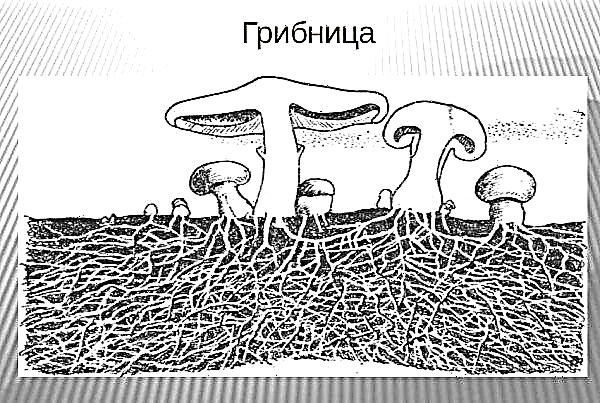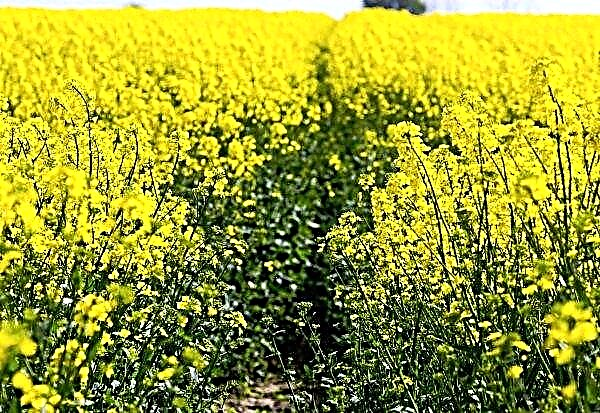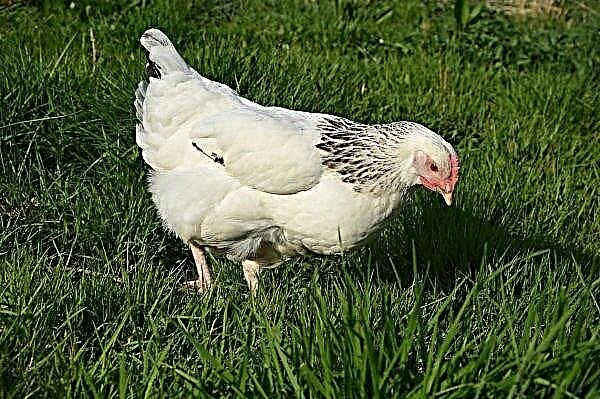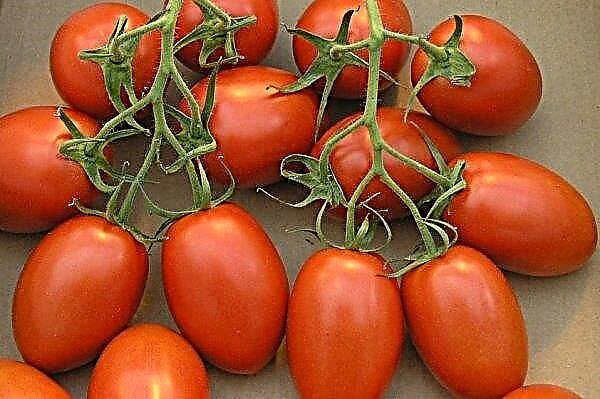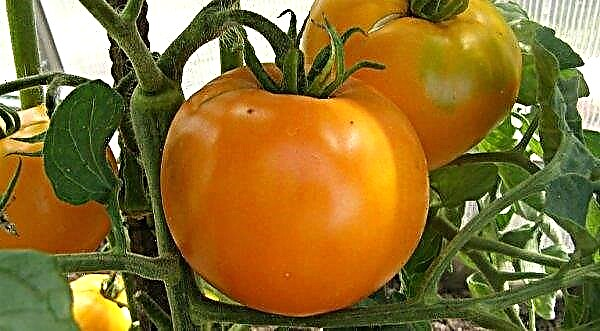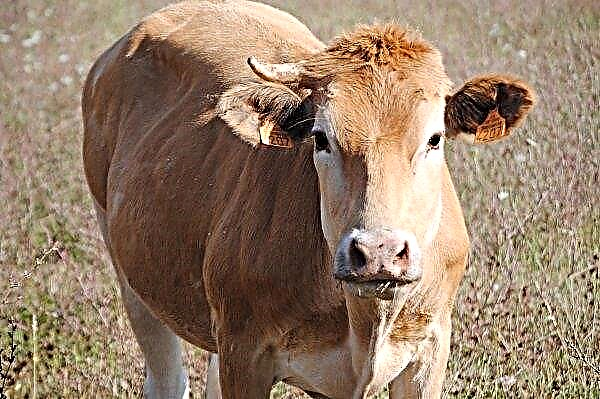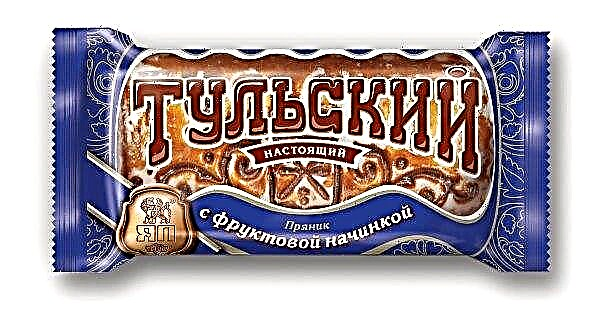When growing tomatoes on the site, there is a risk of their infection with various diseases that may appear with improper agricultural techniques for growing this crop. To prevent the occurrence of the problem, it is recommended to use special means - fungicides, one of which is Pennocotseb. This article provides a description of the drug, a list of its pros and cons, the principle of exposure to tomatoes, as well as instructions for use.
Did you know? The use of fungicides in combination with insecticides leads to an increase in the toxicity of the latter and adversely affects the population of bumblebees and bees.
Descriptions and form of release of the drug
The Pennocotseb fungicide belongs to contact preparations performing a protective function. Its use prevents the appearance and development of fungal infections on tomatoes.
The description of the tool is presented below:
- The active substance of Penncoceb is mancozeb, which protects the surface of plants from the penetration of harmful pathogens. Its content in 1 kg of the product is at least 800 g.
- The substance mancozeb inhibits the development of the cell membrane of harmful microorganisms and stops the activity of their enzymes.
- The drug is well combined with pesticides and other fungicides, but is incompatible with highly acidic and alkaline agents.
- This tool belongs to the 2nd class of toxicity to humans. When using it, you need to take care of personal protective equipment, and manual work on the beds can be carried out only 7 days after processing.
- The form of the drug is wettable powder, packaged in paper packaging of various sizes.
Did you know? The annual global production of fresh tomatoes is more than 60 million tons.
Advantages and disadvantages of the Pencotseb fungicide
This drug has gained popularity among many gardeners due to the fact that it is a truly effective prophylactic against fungal infections.
- A list of all the advantages of Penncoceb is presented below:
- the drug can be used throughout the growing season of plants;
- suitable for processing various vegetable and garden crops (tomatoes, potatoes, grapes, apple trees);
- the product contains manganese and zinc, which provide additional foliar nutrition of tomatoes;
- lack of resistance (addiction);
- sticks well to the surface of plant leaves;
- does not accumulate in soil and fruits, safe for birds and insects;
- well soluble in water;
- good compatibility with other chemicals for processing beds;
- helps to get a high yield;
- It is hygroscopic, leaving moisture on the leaves and in the soil around the plants.
- The disadvantages of this fungicide are:
- the use of the solution is effective only before the first signs of disease appear on the plant;
- in rainy weather, the protective action of the product is reduced, because part of the solution is washed off the surface of plants.
Effects of Penncoceb on Plants
This tool belongs to drugs that act exclusively on the surface of the plant and do not penetrate its fruits. This makes Penncozeb as safe as possible for use in growing tomatoes at its summer cottage, provided that it is used correctly.
Features and timing of the effect of fungicide on tomato bushes are listed below:
- the drug begins to act within a day after processing the beds;
- when mixing the powder with water, a stable suspension is obtained, which remains for a long time on the surface of the bush;
- after spraying, the fungicide evenly spreads on the surface of the leaves and stem of the plant, protecting it from infection;
- the duration of the drug depends on weather conditions and is up to 15 days from the date of treatment;
- covering the plants with a thin protective layer, the fungicide solution prevents the penetration of harmful microorganisms and fungi into the leaves and stem.
Important! For irrigation of 1 m² of beds, it is recommended to use 10 l of fungicide solution. The time interval between sprayings is from 7 to 10 days.
Dosage and instructions for use
To process beds with tomatoes, the required amount of Penncoceb fungicide should be dissolved in 10 l of water and the plants treated with the resulting solution. Spraying is carried out in the morning or evening hours at a wind speed of not more than 5 m / s. This tool can be used to prevent various diseases that can affect not only tomato bushes, but also other crops. The consumption rate of the drug and the number of treatments depend on what culture it is used on.
Below are the dosage rates for various diseases:
- for the prevention of late blight on tomatoes, use 16 g of the product for every 10 liters of water, treating the bushes up to 3 times per season. Harvesting fruits is possible no earlier than 20 days after the last processing;
- to prevent the appearance of mildew on grapes, you need to prepare a solution of 10 liters of water and 20-30 g of the drug. Up to 4 treatments can be carried out in one season, but the last of them should be no less than 30 days before harvesting;
- To protect potatoes from macrosporiosis and late blight, for every 10 l of water, 12–16 g of fungicide is used, prophylactically treating the beds up to 3 times per season. The last spraying is carried out no later than 1 month before harvesting;
- to prevent damage to the beds with onions by peronosporosis, you need to spray the plants with a solution of 20-25 g of powder and 10 l of water. Up to 3 treatments can be carried out per season, and crops can be harvested no earlier than 14 days after the last spraying;
- in order to protect the apple trees from scab and fruit rot, 20 g of “Penncoceb” should be dissolved in 10 liters of water and sprayed trees 3 times per season. From the moment of the last processing to harvesting, at least 30 days must pass;
- for the prevention of rhizoctonia of seed potato, tubers are irrigated with a solution of 10 l of water and 25 g of fungicide.
Important! During rains, part of the product can be washed off the surface of the bushes, so it is recommended that the treatment be carried out in dry weather.
Terms and conditions of storage
Shelf life of the Penncoceb preparation is 2 years from the date of manufacture, which is indicated on the package. When storing funds, you must adhere to these rules:
When storing funds, you must adhere to these rules:
- the drug can not be placed near food;
- air temperature should be –15 ... + 30 ° С;
- fungicide should be stored out of the reach of children and pets;
- protect the product from direct sunlight;
- you can not put the drug near heating devices and other sources of heat;
- Store fungicide only in the original sealed packaging in a dry place.
After using the product, the packaging must be burned, and the randomly scattered powder must be carefully collected and buried in a separate area. The Penncoceb fungicide is a reliable means of protecting tomatoes from late blight, but requires careful handling. Adhering to the recommendations for using the product listed in this article, you can protect the beds from infection and get a generous tomato crop.


